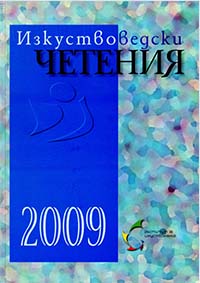Образи на войната. Милитаристичната парадигма в театъра през първото десетилетие след Втората световна война
The Images of War. The Military Paradigm in Theatre during the First Decade after the Second World War
Author(s): Joanna Spassova-DikovaSubject(s): Theatre, Dance, Performing Arts
Published by: Институт за изследване на изкуствата, Българска академия на науките
Summary/Abstract: The proposed text which is a part of a larger research project, discusses some processes of formation of the main paradigms and the new language of the totalitarian theatre culture in Bulgaria during the first decade after the Second World War (1944-1954), which pertains to the representation and the preservation of the memories of war on the stage. In the totalitarian state theatre played a very important role as far as with its specifics to keep an alive link with the audience, it was one of the important ways for imposing the totalitarian ideology and for creation of new collective identity. It was bridging the world of ideas and the material reality. The actor's body as a "recording surface" became a broadly used device for visualization and dissemination of the collective memory of war and for cultural identification in the frame of the official political strategies. On the stage the actors represented ideological schemes. Thus distorted images and historical narrative were created about the events before, during and after the war, which today the cultural historians have to reconsider.
Journal: Изкуствоведски четения
- Issue Year: 2009
- Issue No: 5
- Page Range: 242-250
- Page Count: 9
- Language: Bulgarian
- Content File-PDF

